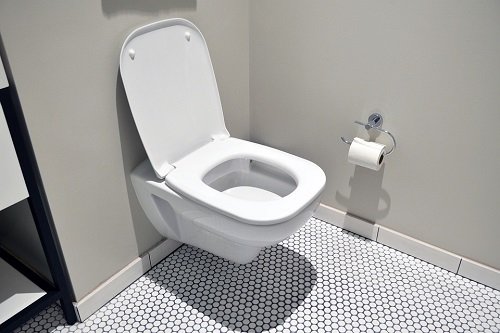Many homeowners often opt for disinfectants when they want to clean their toilets, and many of those products contain bleaching agents. While these may be a good toilet cleaning product for toilet seats made from porcelain or plastic, wooden toilet seats are porous and can absorb bacteria that you’ll not be able to see with your naked eyes. Furthermore, wooden toilet seats are very delicate in general, and using a bleaching cleaner will leave an unattractive appearance. Bleaches such as Ajax or Bon Ami will definitely be too abrasive for your wooden toilet seat. In this guide, we highlight key tips on how to clean wooden toilet seats.
Steps On How To Clean Wooden Toilet Seats
You’ll need the following items to clean your wooden toilet seat:
- Dish soap
- Textured sponge
- Paper towels
- Disinfectant spray
- Warm water
To safety but effectively clean your wooden toilet seat, here are the steps to follow:
- Begin by wetting and ringing out a textured sponge with warm water.
- Apply a line of soap directly to the seat and scrub the seat over the dish soap with a moist sponge. Move with small circles for the soap to penetrate the wooden toilet seat.
- Rinse out the damp cloth with more warm water as you cover every inch of the seat. Keep repeating the process until you’re done cleaning the entire wooden toilet seat.
- Now use the non-textured side of the damp cloth or sponge to wipe away the soap residue.
- Rinse the sponge as it gathers excessive amounts of foam, and repeat the process until you finish removing all the dish soap.
- Finally, use a disinfecting spray to spray the seat and paper towel to wipe it up.
- Let the toilet seat stay used for a while before you visit the bathroom.
Tips For Taking Care Of Your Wooden Toilet Seats
Here are a few maintenance tips to help keep your wooden toilet seat clean, aesthetic, and sanitary for long:
Ensure the Seat is Always Dry
No matter the type of cleaning agents you choose to use on your wooden toilet seat, you should always ensure you keep the seat dry. That means you must avoid any kind of soaking at all times. Avoid leaving cleaning products or water on the surface of the toilet seat for a long period. Wipe the seat clean and leave its lid up to allow sufficient airflow to dry the wooden seat. A damp wooden toilet seat is a breeding ground for germs that’ll lead to serious mold growth.

Repair Cracks
Be sure to replace or repair cracked wooden toilet seats as soon as possible. In fact, wooden toilet seats are known to easily crack when slammed and may require replacement from time to time. Therefore, you should regularly inspect them for cracks and repair or replace any cracked seats immediately. Homeowners who don’t inspect their wooden toilet seats will end up experiencing pinches when they use their toilets or incur expensive toilet system repairs down the road.
Take Care of the Unit
Ensure that the cleaning agents you apply on the seat hinges are the same as what you use for cleaning the wooden toilet seat. Hydrogen peroxide is a perfect cleaning option as it can reach all the nooks and crannies of the entire hardware. Furthermore, it’ll discourage rusting on the toilet’s metallic hinges. Check the bumpers under the seat and make replacements if you notice some discoloration, breakages, and dislodging. That is one way of making sure your wooden toilet seat’s bowl serves for longer without needing repairs or replacements.
Wrap Up
While wiping down a toilet seat with a damp cloth may work for other types of toilet seat designs, wooden toilet seats are unique in their own way. In other words, they’ll require you to be extra careful to avoid ruining the seat. That is mainly because a wooden toilet seat is porous and can absorb bacteria, germs, and the cleaning agent you’re using to clean it up.
Whether your wooden toilet seat is painted or stained, you should consider using the right disinfectant to clean it. Feel free to share your experiences and suggestions about cleaning a wooden toilet seat in our comment section below.
